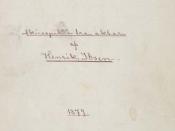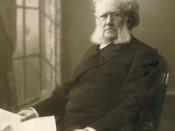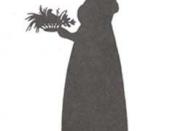An Interpretation of A Dolls house-Compared to 50's to the present -Are we better off -you decide "A Doll's House" is classified under the "second phase" of Henrik Ibsen's career. It was during this period, which he made the transition from mythical and historical dramas to plays dealing with social problems. It was the first in a series investigating the tensions of family life. Written during the Victorian era, the controversial play featuring a female protagonist seeking individuality stirred up more controversy than any of his other works. In contrast to many dramas of Scandinavia in that time which depicted the role of women as the comforter, helper, and supporter of man, "A Doll's House" introduced woman as having her own purposs and goals. The heroine, Nora Helmer, progresses during the course of the play eventually to realize that she must discontinue the role of a doll and seek out her individuality.
David Thomas describes the initial image of Nora as that of a doll wife who revels in the thought of luxuries that can now be afforded, who is become with flirtation, and engages in childlike acts of disobedience (259). This inferior role from which Nora progressed is extremely important. Ibsen in his "A Doll's House" depicts the role of women as subordinate in order to emphasize the need to reform their role in society.
Definite characteristics of the women's subordinate role in a relationship are emphasized through Nora's contradicting actions. Her infatuation with luxuries such as expensive Christmas gifts contradicts her resourcefulness in scrounging and buying cheap clothing; her defiance of Torvald by eating forbidden Macaroons contradicts the submission of her opinions, including the decision of which dance outfit to wear, to her husband; and Nora's flirtatious nature contradicts her devotion to her husband. These occurrences...


